
Manchester United Europe
Written by: Rik
Date posted: November 7, 2015
- Genre: Sport
- Developed by: Krisalis Software
- Published by: Krisalis Software
- Year released: 1991
- Our score: 3
As I may have mentioned before, when it comes to football, Leeds United are my team. Given their current lowly and vaguely comical status as second tier strugglers who change manager every five minutes, their fortunes are generally a topic I try and avoid, although if pressed during polite conversation, I feign cheery acceptance of their plight and refer back to their last trophy success – the league winning season of 1991/92 – by noting that it was the first year I ever took an interest in football, and it’s therefore been downhill ever since.
That’s actually a slight fib though, employed partly because it’s a neat and convenient line that you can just roll out, but also partly because the truth is even more embarrassing. My interest in football had in fact begun the season before, during *gasp* Manchester United’s Cup Winners’ Cup campaign. Aided by ITV’s low-key midweek coverage (which was far removed from the stagey pomposity of the current Champions League), I started to follow United’s fortunes closely.
At some point during the tournament’s latter stages, I revealed to my parents my thoughts on whether they might ultimately win the trophy. My dad was alarmed: “You don’t want Manchester United to win, do you?” “Yes,” I replied, “they’re the English team. Don’t we want the English team to do well? Like England in the World Cup?” “He’s right,” said my Mum, who in all likelihood saw this as an opportunity to rile my father by playing dumb. “Why shouldn’t he support the English team?” My dad remained silent for a moment before responding. “You don’t understand football now, son. But you will.”
Indeed, it did all become clear, soon enough: in that successful league-winning season, Manchester United were Leeds’ closest rivals, providing an easy avenue into the historical enmity between the clubs, and the counties of Yorkshire and Lancashire. After that, Manchester United won everything in sight for the next 20 years or so, while Leeds largely floundered. In 1990, though, United’s FA Cup success has just ended a long trophy drought, and their subsequent entry into the Cup Winners’ Cup came in the first year that English clubs had been allowed to participate in European competition since the Heysel Stadium disaster of 1985. Call it innocence, naivety, or stupidity, but – for whatever reason – I was more enthusiastic, and less cynical, about the game in those days, and, ridiculous as it sounds now, I felt inclined to support Manchester United as the plucky British underdogs.
Manchester United Europe was the second of a series of tie-ins developed by Krisalis, the first of which – simply titled Manchester United – I was not aware, either at the time or subsequently (until now, obviously). The later games – Premier League Champions and The Double – came in United’s phase of unbearable 90s smugness, and were heavily influenced by Sensible Soccer, so I had a double incentive to avoid them entirely. (There was, incidentally, a Leeds United game, a low-rent management affair in which the league champions had been relegated – Batty, McAllister, Cantona et al – to the bottom division, and were forced to battle their way up the leagues by taking on the likes of Aldershot. I never played it but it sounds awful, a bit like being a Leeds fan in real life.)
I think of Manchester United Europe as the Cup Winners’ Cup victory tie-in, which it was, although it was released after the trophy had been secured, and thus the squad at your disposal also includes later signings that weren’t part of that campaign. You can also compete in the two other major European trophies of the time (in those days, there was no Champions League, it was then a knockout tournament called the European Cup, although ironically you did actually have to win the league – become champions, if you will – to qualify. Runners up contested the UEFA cup, while FA Cup winners entered the Cup Winners’ Cup) as well as the now-discontinued European Super Cup, a two-leg match between the winners of the European Cup and Cup Winners’ Cup.
Options are fairly limited. You can only play as Manchester United (obviously) and they’re the only squad with real life names. They’re mostly accurate, save for an alternative spelling of Andrei Kanchelskis’s name and the rather uncharitable omission of the late Les Sealey, who played a key part in the real-life 1990/91 campaign, and whose image was used for the box art. Youth goalkeeper Ian Wilkinson, who played one match for United, is included instead, although this seems to be unique to the DOS version – on the ST Sealey was present and correct (it wasn’t a great version in other respects, though: see MUE: Alternate versions for more).
Stats and tactical options aren’t that detailed and don’t seem to make much difference, certainly not to the extent that the prospect of simply managing the side – which is an option – becomes an attractive one. Elsewhere, it’s pretty much a case of getting into a match: you can either arrange a friendly match, or go to the next tournament game – if there isn’t one, then you get a message telling you that, which I find a bit bizarre, although not as much as the fact that you’re still returned to the tournament menu once you’ve been knocked out, and instead of getting an automatic ‘game over’, you’re greeted with a vaguely mocking message when you try to progress and have to quit yourself (presumably you could still opt to play a series of meaningless friendlies in a state of denial that the season was actually over).
Out on the pitch, you view the action from a TV-style side-on view, which was always a major selling point at the time as it was more visually appealing than the top down perspective employed by the more highly fancied games in the genre. You always wanted games with this view to play well, because they looked good in screenshots, but unfortunately, they rarely did. Whatever else you might say about Kick Off, or Sensible Soccer, they did capture that instinctive feeling of having scored a goal: however unrealistic the build-up, or execution, it felt like you’d actually kicked a ball into a net, which is what it’s all about at the end of the day, Clive. That feeling is sadly missing here, thanks to the match ball behaving like a punctured beach toy, and goalkeepers that are able to stop most shots dead and make interceptions the second you enter the penalty area. Even your AI opponents, who manage to frequently round the ‘keeper and cause momentary panic, seem unable to take advantage of the gaping net presented to them.
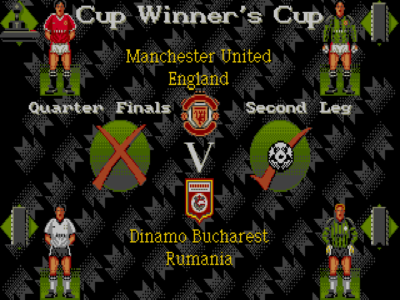
I didn’t notice it until I looked through the screenshots, but despite what is promised by this match preview screen, your players never wear black socks in the game, and neither does your ‘keeper ever sport the green and black striped jersey. [Interesting! – a reader]
Eventually, a game of sorts is possible. Like United under Louis van Gaal, you can develop a style that’s reasonably effective, if not always easy on the eye. Passing to feet is near impossible, so it’s a case of tapping into space and hoping a player will pick it up, while low shots from outside the box have a fairly good success rate. Meanwhile, a couple of key facets of AI behaviour soon become obvious: the opposition players run at a slight angle to make it harder to line up a block tackle, and they tend to try and get rid of the ball when you do get near them, so sliding in is often a waste of time.
There’s always a certain amount of entertainment in simply working out a football game in this way, and progressing from baffling defeat to easy victory. The European format means that you don’t need to play too many games to get to the end, although like many games of a similar vintage, the reward for doing so is precisely zip (at least it was with the Cup Winners’ Cup, I didn’t go back and try to win the others). I doubt the entertainment could be sustained over, say, a full league season, and your goals scored record would certainly be pretty high by the end – Bryan Robson scored an unlikely 23 goals during my short CWC campaign.
Manchester United Europe is fairly terrible to play now, but one can understand why it was appealing at the time. Presentation – at least visually – is still pretty good, from the authentic-ish looking 90s era Sharp/Adidas strip, complete with shirt numbers, real names, and stadium graphics, down to the little touches here and there that are quite impressive, such as seeing subs warm up on the touchline, and substituted players putting on a jacket before returning to the bench. Sound is Adlib based, and spot effects are less good, although the music is at least fairly catchy. It’s easy to see why, back in the day, some suggested it was one of the top contenders.
For me, it’s definitely more in the “I remember this” rather than “I like this” category. It was fun to revisit for a while, particularly as it stoked some memories of 90s football and sent me scurrying to Wikipedia and YouTube at various points, but unless you have similar predilections – which you might, if you’re reading this in the first place – I doubt there’s much to interest you here.

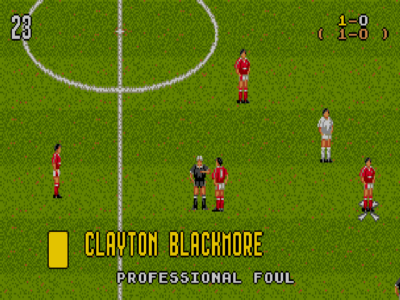
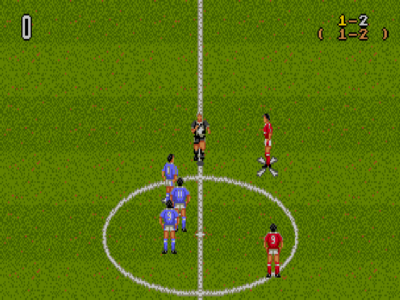
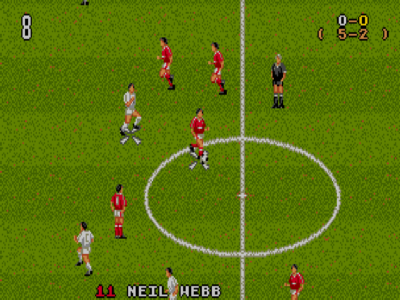
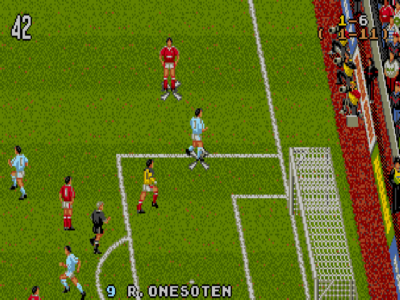

 Posts
Posts